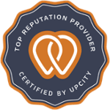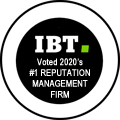Penguin Recovery - How to Recover from Penguin 3.0
Matt Haran, October 24, 2014
About a week ago, Google rolled out their updated Penguin algorithm, Penguin 3.0, but it has been more than a year since they last launched their updated version. It is said that the Penguin 3.0 has affected about 1% of search queries. For those of you not aware, Penguin is an algorithm that identifies what Google considers to be “webspam.” In a sense, it acts as a penalty on any website taking part in spammy and unnatural SEO tactics both on and off the site. The end result of the algorithm reduces a sites visibility in the search results. This in return can be devastating for a business. Rankings for important keywords will decline and web traffic will drop off dramatically. If your site happens to be one of the victims of this update, it is essential to be proactive and analyze the situation.
I like to look at it as a three step process, which I describe below:
Penguin Recovery Step One – Assess & Analyze
If your site has been impacted, chances are the problem is with your link profile. I recommend pulling all of your backlinks from Google WMT and a third party source like aHrefs. Remove all the duplicates and analyze all of the links determining which ones are hurting the site. The following are a few examples of links that Google considers to be link schemes in violation of their quality guidelines:
- Low quality directory and bookmark sites
- Unnatural Exact-match Anchor Text
- Large-scale article or guest posting links
- Hidden links
- Links that were paid for
- Irrelevant forum comments
If your link profile does not seem to be the root of the issue, then it may be some on-site issues that are causing the problem. Tactics like keyword stuffing, hidden text and links can also be a cause so make sure you have reviewed your website for these problems.
Penguin Recovery Step Two – Remove the spam
After you have compiled your list of spammy links, you should try manually removing them. Collect contact information on the domains the links fall on using WhoIs and politely ask that the link(s) get removed. For the links you get removed, that is great, but for the links you could not remove, you can disavow them in Google’s WMT. This tells Google to no longer associate these links with your site. I recommend not to use this tool until you've tried to manually remove the links first. Google even mentions this in their disavow backlinks section. Once the disavow file is uploaded, it will take some time for Google to incorporate the file into their index and re-crawl the web.
If you need link removal services, WebiMax has a staff of experts who have successfully rectified the link profiles of clients in every industry.
Penguin Recovery Step Three – Wait and Strategize
Once you have removed and disavowed all of the links affecting your site, you must wait until Google refreshes the Penguin algorithm before you see any changes. If you took the proper steps and removed/disavowed the right links when the algorithm is refreshed then you should see improvements in both organic traffic and search engine rankings. While waiting, and even after recovery, it would be wise to develop a new strategy on some positive actions to take on the site. I recommend looking into the following:
- Enhance and create quality content (this helps build links naturally)
- Build quality and relative links.
- Build up the brand through social signals.
- Build relationships through relationship outreach.
As mentioned before, it took more than a year for Penguin to update, but it is believed that this most recent update has allowed the algorithm to refresh more frequently. Penguin recovery may be a lengthy process, but it is necessary if you want your to prosper.
Since the update, WebiMax has seen positive movement from sites previously affected from Penguin. If your site has been affected, contact us to learn more about our Penguin recovery services.






